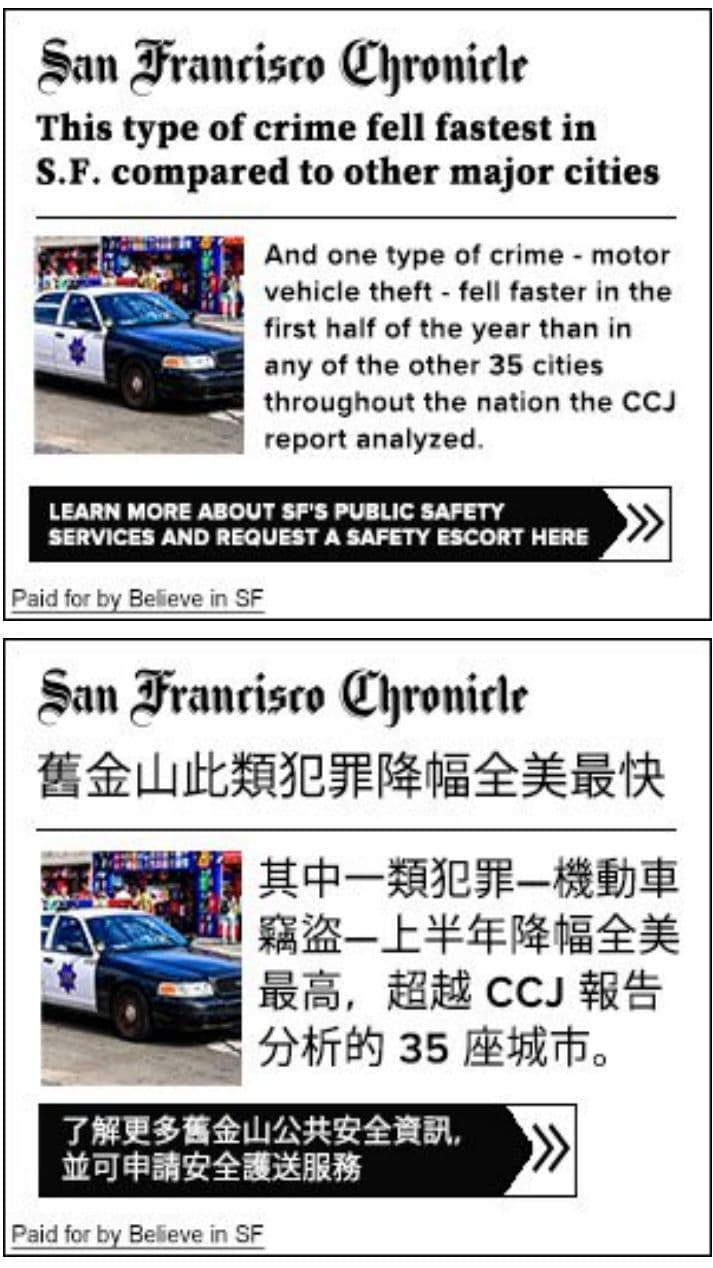New leadership at 137-year-old Chinese school explores ways to inspire more students to learn Chinese in San Francisco Chinatown


SAN FRANCISCO — San Francisco Chinatown has a profound history as the oldest Chinatown in North America, the oldest Chinese school for teaching Chinese languages in North America was also established in San Francisco Chinatown in 1888.
Under the new leadership of the 137-year-old Central Chinese High School in America (Central Chinese School), a number of new programs will be launched to inspire more students from all ethnicities to sign up for their wide variety of classes to learn Chinese languages.
Chinatown community leaders Robert Chiang and Ding Lee were elected as the new Chair and Vice Chair respectively of the Board of Trustees at the Central Chinese School for 2025. Their goal is to boost enrollment and promote the school's very diverse programs. So more younger generations would benefit from learning Chinese languages and studying Chinese culture.
Now accepting applications for summer school and fall semester
Currently the Central Chinese School is accepting applications for summer school and fall semester from K-12 students to sign up for classes on weekdays, Monday through Friday, and weekends.
The 7-week summer school which offers classes in Chinese languages, culture, and arts, will begin on June 16 and end on August 1. Free lunch and snacks will be provided by the City and County of San Francisco. More information can be found online at www.cchsia.org or by calling 415-982-2407.
When the Central Chinese School was opened at 777 Sacramento Street in San Francisco Chinatown in April 1888, it was first named as San Francisco Chinese-Western School and enrolled 16 students in two classes. The student body had grown to 2071 as the peak in 2010 for over a century.
The number of students enrolled each school year at Central Chinese School since 2010 continued to decline in the past 15 years. The enrollment in 2024 was 767 students.

"The popularity of offering Chinese language classes and immersion programs at both public and private schools in the entire San Francisco Bay Area region has led to the decline of student enrollments at Central Chinese School," said Lee who has been on the school's Board of Trustees for 20 years.
A number of elements have contributed to the prevalence of learning Chinese languages in K-12 and colleges. Chinese and Asian populations have continued to grow in recent decades.
According to the U.S. Census, the Asian population grew significantly between 2010 and 2020 in the San Francisco Bay Area. In 2010, Asians comprised 25.5% of the Bay Area population, while in 2020, Asians grew to 33.1%. Asians outnumbered the white population in the 2020 census where whites decreased from 40.3% to 32.9% over the decade.
In San Francisco, the white population was 38.1% in 2020, down from 41.7% in 2010 and 43.5% in 2000. Asians represented 33.7% of the population in the city in 2020, up from 33.1% in 2010 and 30.7% in 2000.
Among Asians who reside in San Francisco, both the populations of Filipino and Japanese Americans continuously declined in the last two decades, while Chinese Americans steadily stabilized as the largest Asian subgroup with 21% in 2020, 19.8% in 2010, and 20% in 2000. The number of Chinese Americans in the city significantly increased between 1970 to 2000, with 8.7% in 1970, 12.1% in 1980, 17.6% in 1990 and 20% in 2000.
From a cultural perspective, most Chinese American parents like to see their children learn the culture and language skill of their ethnicity.
The rising of China's economic power globally in recent decades becoming the 2nd largest economy in the world has boosted the demand for learning Chinese languages among Chinese American families in the Bay Area, in particular the Mandarin classes, to meet the needs of the international and job markets.
"It is great to see more Chinese schools established throughout San Francisco and the Bay Area to provide more opportunities for next generations to learn Chinese as their additional language skills,” said Chiang. “In the meantime, we need to work hard to improve the quality of our education and make Central Chinese School be more competitive among all Chinese schools.”.

Chiang and Lee recently travelled overseas to visit Chinese schools and learn their experiences for improvements at Central Chinese School. Mandarin is the official language in China and Taiwan. Cantonese is the most widely spoken Chinese dialect in the San Francisco Chinese community.
"Cantonese is one of the oldest Chinese languages in history. It was recorded to be spoken in China dated back over 2,000 years ago. It has a very rich history," said Chiang who has proposed launching a new class of learning Cantonese in the upcoming school semester.
Since most of the early Chinese immigrants coming to San Francisco in the 1800s spoke Taishanese and Cantonese, Central Chinese School was first teaching students in Taishanese from 1888 to 1926 when Cantonese was adopted as its official instruction language. Mandarin, which replaced Cantonese, as the language to teach students began in 1988.
For the past three decades, Central Chinese School has listed Mandarin as its instruction language teaching students to learn, write and read Chinese. The school also switched to teach simplified Chinese as the primary, but also teach traditional Chinese as secondary.
"Cantonese is still one of the most commonly spoken Chinese languages in the San Francisco Bay Area. Some parents have sent their children outside San Francisco to learn Cantonese. I believe adding a new class of teaching Cantonese will be beneficial to community members," Chiang said.
Chinese Consolidated Benevolent Association (CCBA) fully supports Central Chinese School for over a century
The Chinese Consolidated Benevolent Association (CCBA), the oldest and most powerful family association in San Francisco Chinatown, was formed in 1849. Since Central Chinese School was founded in 1888, CCBA has always been behind the school with full support for over a century. Leaders of the CCBA are members of the school's Board of Trustees.
The Qing Dynasty lasted for 267 years, from 1644 to 1911. It was the last imperial dynasty in China. The establishment of Central Chinese school as the first school teaching Chinese languages in North America was under the direction of Ming Auyang, then Consul General of China in San Francisco, and with the approval of Yin Hen Zhang, China’s Minister to the United States in the 1880s during the Qing Dynasty.

The founding of Central Chinese School was planned for two years before it was officially opened for enrolling students in 1888. In its first year of operation, there were only 16 students divided into two classes. "One teacher and a teaching aide were assigned to each class," Central Chinese School wrote about the history in its yearbook. "However, the school being at its initial stage, its basic purpose of promoting Chinese culture and study was difficult to materialize under the then conditions.”
"In 1905, the Qing government demolished the old scholar system in China. New form of school system was in development. The Qing government also planned to promote Chinese education abroad for its citizens. Mr. Qing Gui Liang, an official who lectured to the Emperor, was sent to America to materialize this goal."
Liang arrived in San Francisco in April 1908. "The Chinese Consolidated Benevolent Association (CCBA) gave him its full support and assigned a group of its leaders to assist him." Then Ambassador Bing Chun Xu from the Qing government to the U.S. was appointed as school principal of Central Chinese School.
In 1909, Central Chinese School was relocated to the second and third floors of the CCBA building on Stockton Street. The principal position was switched to a rotation system between leaders from major family associations.
In 1911, Dr. Sun Yat Sen successfully overthrew the Qing government in a revolution in China. The Qing Dynasty ended. In 1915, Central Chinese School went through reorganization under the direction of CCBA. A governing board, Board of Trustees, was formed with board members from the CCBA.
In 1916, the Central Chinese School's enrollment was up to 120 students in four classes. The principal’s vacancy was temporarily filled by Zhao Xin Zhu, then Consulate General of China to San Francisco.
In 1919, the school purchased the lot behind the CCBA building for $2,400 and transformed it into a playground for its students.
In 1920, the Central Chinese School began to take female students ending an all-male school for 31 years.

In 1927, Central Chinese School building at 827-829 Stockton Street was acquired as its permanent campus. Song Zhou, a generous businessman, donated $14,700 to the school. The school name was changed to its current name. The library at Central Chinese School was named after Zhou in appreciation of his generosity.
From 1988 to 1992, Mimi M. Lai became the 8th and first woman principal in the history of Central Chinese School. Lai launched kindergarten classes and switched the instruction language from Cantonese to Mandarin. Under her leadership, the student body jumped from 200 to over 500.
In 2008, the San Francisco Unified School District accepted transfers of class credits from students who studied Chinese languages at Central Chinese School to their K-12 schools.
As of February 2010, the enrollment at Central Chinese School increased to 2,071, which was the largest student body count in the history of the school.
As a result of the popularity of learning Chinese in the San Francisco Bay Area and across the nation in the past 15 years, students have been able to take Chinese language classes at their regular schools and after school programs. Not only the student enrollment at Central Chinese School has since dropped year by year, several smaller Chinese schools in San Francisco Chinatown were closed after the pandemic. Only two family association operated schools are still offering Chinese classes in San Francisco Chinatown, Central Chinese High School and Nam Kue School.
"Compared with other Chinese schools in the Bay Area, Central Chinese School is very unique and attractive in many ways," Lee said with pride, serving as a member of its Board of Trustees for two decades. "It is the oldest Chinese school in North America with rich history as well as quality education in teaching Chinese."
"Central Chinese School is still one of the largest in North America hiring over 20 teachers who have extensive teaching experiences in the United States and overseas," Lee continued. "Students can easily find classes at Central Chinese School to fit into their regular day school schedules."

Central Chinese School opens everyday offering after-school classes on weekdays, Monday through Friday from 3:45pm to 5:45pm, Saturday and Sunday. The Summer school in 2025 will begin on June 16 and end on August 1. Students can sign up for a full class which runs from Monday to Friday full day, a morning only class, or an afternoon class.
"In addition to Chinese languages, Central Chinese School also teaches Chinese ethics as moral education to help students learn to be better citizens in a society," said Lee. "Students would learn about the legendary and notable Confucius' Three Character Classic. Courtesy, Justice, Integrity and Sense of Shame are the school motto at the Central Chinese School."
Chiang has actively explored ways to promote Central Chinese School and inspire more students to study Chinese languages. Presently there are several mixed-race and one Hispanic students enrolling at Central Chinese School. "We welcome students from all ethnicities and backgrounds to enroll in learning Chinese languages and culture," noted Chiang.
- Tech entrepreneur & political advisor Saikat Chakrabarti runs for Congress to fill Nancy Pelosi’s House seat
- Kenneth Binder appointed as San Mateo County Sheriff for a 3-year term
- U.S. Representative Nancy Pelosi to retire in Jan 2027 after 40 years in Congress representing San Francisco
- New federal and state rules on eligibility of public benefits to affect undocumented, non-citizen immigrants from Jan. 1, 2026
- Three finalists among seven candidates named for the next San Mateo County Sheriff
- Police search for man who allegedly stole two 28-inch-tall popular Labubu dolls worth of thousands of dollars
- San Francisco launches a new $3.6 million Downtown SF Vibrancy Loan & Grant Fund to encourage small businesses to fill vacant storefronts in downtown
- SNAP (Food Stamps) to stop issuing funds in November, participants begin to save current benefits for future food






